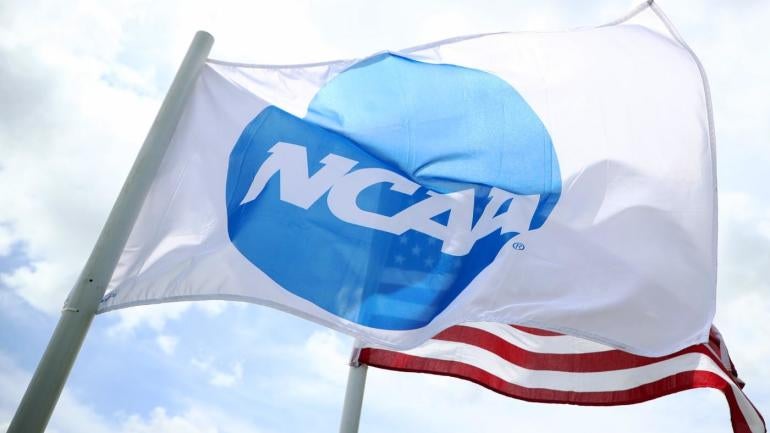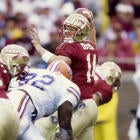
The announcement came during SEC Media Days where the "It Just Means More" motto took on new meaning.
"Surprised at that? Absolutely surprised at that," said Tennessee coach Josh Heupel after first hearing Thursday the NCAA had essentially just allowed athletes to transfer an unlimited number of times. "I think it only heightens the craziness to the transfer portal."
That was a first reaction to the NCAA's announcement that the Division I Council had recommended eliminating the restriction against players transferring multiple times. The NCAA Board of Directors is expected to rubber-stamp the recommendation Aug. 3.
The news comes not even a year into the NCAA's new relaxed rules for one-time transfers.
Fun fact: The world hasn't come to an end. Athletes look more like students who are able to transfer at their leisure. Coaches have adjusted too. During the next two years on a trial basis, programs will be able to sign unlimited amounts of players during signing periods as long as they don't surpass the annual limit of 85 scholarship players.
All of it has been a look into the slow implementation of the deregulation of the NCAA. Big Brother is going to be less involved in such matters, not more, in the future. But if coaches thought they had issues with the one-time transfer rule, the climate just became the Wild, Wild West on steroids – with an asterisk.
Because of the academic requirements involved it will be difficult to transfer more than once as an undergrad. Incoming transfers have to be guaranteed financial aid for the five-year window of eligibility.
"For one transfer, maybe two, is probably pretty manageable," said a source involved with the Council's process. "Get into multiple transfers it gets tougher and tougher."
Graduate students are currently allowed to transfer making the maximum transfers allowed without a waiver at two. The lifting of restrictions initially had coaches' heads spinning. Yes, it is now at least possible for an athlete to play at four different schools in four different years.
"A kid can go as many times as he wants and doesn't have to graduate? Wow," Texas A&M coach Jimbo Fisher told CBS Sports. "It's just open recruitment of your own players [by other schools]. Everybody can recruit [them]. That's what they're doing with third parties anyway, with agents. Agents are coming in saying, 'I can get you a better deal here.' "
The legislation was both expected and a surprise. Administrators who had seen the NCAA's grip on amateurism slip were not shocked. We are experiencing in real time the NCAA's slow, inexorable move toward a pro model. The latest example: On Friday, CBS Sports reported the Big Ten had received a demand that players receive a share of media rights revenue.
"People have to realize that, yeah, there could be a person that plays for four teams, four different years," said Ohio professor and players rights advocate David Ridpath. "At the end of the day, that's their right until the NCAA wants to sit down and collectively bargain restrictions with the athlete. There's just no other path forward now."
The NCAA Transformation Committee next month is expected to announce moves that would allow conferences and divisions to make some of their own rules. There is already the concern the Big Ten and SEC will monopolize the money, power, influence and championships in college football – at least.
After the implementation of the one-time transfer rule last year, coaches cried that free agency had begun. Players could transfer twice in their careers, once as an undergrad and once as a graduate. NIL added to the confusion as several coaches have told CBS Sports recruits and existing players on the roster are looking for the best NIL deals.
"To say now you can transfer without penalty is going to be a disaster … ," said attorney Tom Mars, who has worked on several high-profile waiver request cases. "Having been a strident leader for the rights of college athletes, I never anticipated they would go this far."
The NCAA this week merely codified the landscape that had developed around the portal and the one-time transfer rule. Those undergrads who wanted to transfer more than once merely applied to the NCAA for a waiver citing extenuating circumstances. More often than not, the NCAA granted those waivers knowing, in the end, it didn't want to face a lawsuit.
"Typically a second transfer would be [granted] anyway just for that reason," Ridpath said. "It's difficult to transfer twice to meet academic requirements whether institutionally, conference-wise or NCAA. But it's not impossible though. Conceivably a person could [transfer as many times as he/she wanted]."
Mars essentially created that climate four years ago when he took Ole Miss lawyers and the NCAA to the cleaners in getting a waiver for Rebels' quarterback Shea Patterson to transfer to Michigan.
In 2019, Mars announced he had given up taking on waiver request cases because of the overwhelming demand for them.
"The year-in-residency rule needed to be changed because coaches were abusing it. They're somewhat to blame," Mars said. "But when historians look back at this, if the NCAA would have dealt with NIL when they should have, they wouldn't have been forced into a corner …
"Maybe this foretells the end of the NCAA," he added.





















